|
Margaret
River, Western Australia
Part
6:
Cape Mentelle
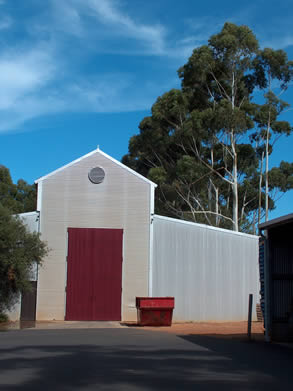 David
Hohnen is the man behind Cape Mentelle. He planted the first
vineyards in 1970, which makes him one of the Margaret River
pioneers. The success of this venture led him to found Cloudy Bay in
New Zealand’s Marlborough region in 1985. In 1990 Veuve Clicquot
acquired 50% of the business, and then in 2000 they took 100%
ownership. In 2002 the present owners, LVMH, bought Veuve Cliquot,
and with it Cape Mentelle. David
Hohnen is the man behind Cape Mentelle. He planted the first
vineyards in 1970, which makes him one of the Margaret River
pioneers. The success of this venture led him to found Cloudy Bay in
New Zealand’s Marlborough region in 1985. In 1990 Veuve Clicquot
acquired 50% of the business, and then in 2000 they took 100%
ownership. In 2002 the present owners, LVMH, bought Veuve Cliquot,
and with it Cape Mentelle.
The spot, just 5 km from the ocean,
was chosen by Hohnen because of its gravelly soils, which are good
for viticulture. They are free draining and have a high mineral
content. Winemaker Rob Mann, who was hosting my visit, pointed out
that you can spot good potential vineyard land by the type of
eucalyptus that grows there. If you see redgums, also known as the
Western Australian Marri, then its a good sign, because the Marri
likes free-draining soils. If you see Karri and blackbud eucalypts,
then beware, because these are an indicator of bad soils. There’s
a lot of winter rain here and grapevines don’t like wet feet.
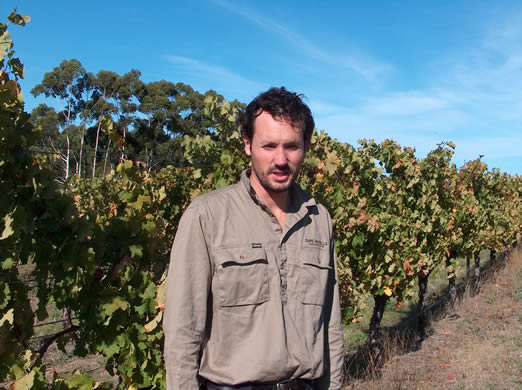
We had a look at the 1970 Cabernet
block, the first and probably the best of Cape Mentelle’s
vineyards. Here the vines are planted east–west, mainly because of
the sea breeze that blows in after 11 am most days.
When I visited, the 2007 vintage
had recently been harvested, and the wines were already taking
shape, having completed their primary fermentation. Rob explained
that the difficult 2006 vintage, which was unseasonally cool, had a
knock-on effect for 2007: if the previous spring is cool there is
poor initiation of bunches in the buds (each bud contains next
year’s potential flowers and thus grape bunches), which then
affects the following season’s fruit set. Combined with the dry
spring and summer in 2007, this meant that there wasn’t a lot of
weight in the bunches so yields were down. ‘We’re happy with
quality in 2007’, says Rob, ‘we just don’t have enough
wine.’ As an example, in the 1970 Cabernet block the yield for
2007 was 3 tons/acre as opposed to the normal 5 tons/acre.
As well as the 1970 Cabernet
vineyard, Cape Mentelle has three other vineyards, including 50
acres over the road planted in 1988, and sources fruit from a dozen
growers.
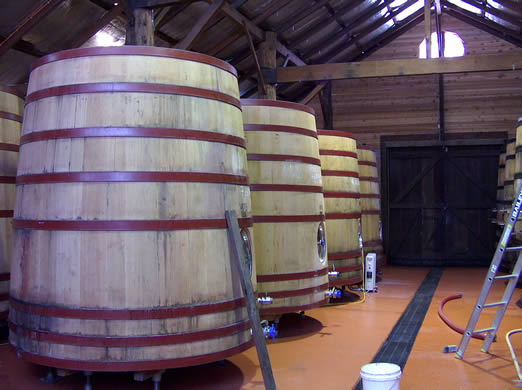
Winemaking is pretty conventional
here. All the reds are basket pressed, and the pressings are
aerated. With whites, winemaking is not overly anaerobic: they just
try to minimize phenolic pick up.
‘The best wine is the easiest to
make’, says Rob. I notice a pole of staves in the winery that is
used for bottom end stuff: these are sent to the bakers for toasting
and put into tanks for cheap wine. ‘For first crop Shiraz we might
have to fiddle around in the vineyard, and in the winery use a bit
of tannin, oak chips and microoxygenation’, he explains.
Trends? Cape Mentelle are using
lower percentage new oak, with more French and less American. They
are also trying to reduce alcohol in both red and white wines,
looking for something more ‘fruit bright’ and elegant, with
better ability to age. As an example, the Cabernet used to be 15%
alcohol and 75% new oak; now it is 14% alcohol and 15% new oak.
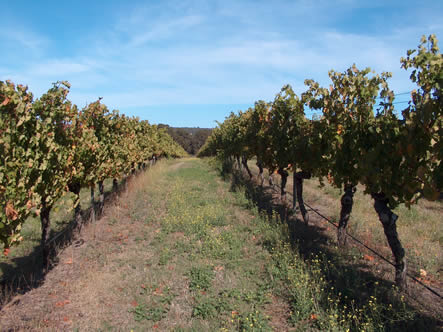
Rob shared his views on
co-fermentation. ‘You need to get good Viognier harvested at the
same time as Shiraz. In Australia the trend is to make green wines
that smell of apricot.’ His best success was with old vine
Grenache in McLaren Vale fermented with 100 year old Sauvignon
Blanc, which made an interesting wine. He’s also had success with
Shiraz and Riesling – in McLaren Vale the Riesling is very tannic.
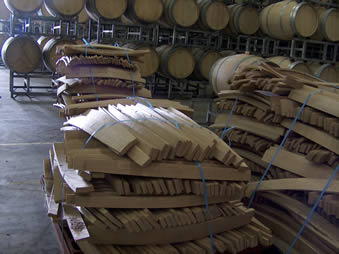 Rob
enthuses about Margaret River cabernet. ‘It’s hard to overcrop
Cabernet in Margaret River. 8 tons/hectare is about as high as you
can get’. By way of comparison, he’s seen 20 tons hectare in
Coonawarra. ‘The best of Coonawarra Cabernet is hard to beat, but
that’s just 5% of production’. Rob
enthuses about Margaret River cabernet. ‘It’s hard to overcrop
Cabernet in Margaret River. 8 tons/hectare is about as high as you
can get’. By way of comparison, he’s seen 20 tons hectare in
Coonawarra. ‘The best of Coonawarra Cabernet is hard to beat, but
that’s just 5% of production’.
What else are Cape Mentelle up to?
They’re playing with Marsanne, Rousanne and Viognier. They are
also doing a little bit of Sangiovese through the cellar door.
We tried some samples of 2007 wines
from barrel:
2007 Sauvignon Blanc
From 30 year old vines. Lovely fresh wine: the barrel adds
texture. It’s a Graves Blanc rather than New Zealand style.
2007 Semillon
Whole bunches are pressed, then it goes to oak with solids for a
wild ferment. Interesting stuff: fresh, complex and minerally. The
lees are stirred which resuspends them: this is a reductive
treatment. If you just leave the wine on the lees without stirring,
the bottom half of the barrel is reductive and the top oxidises a
bit.
2007 Chardonnay
From 25 year old vines. ‘We’re looking for grapefruit pith
and fresh cut pear characters: not too fat and broad’. Margaret
River mostly has Mendoza clone, which has big berries . The small
berry clone used here has so much flavour that it can get too big
and rich. This Chardonnay shows rich fruit but still has nice
elegance and some toasty oak.
2007 Rousanne: nice texture.
2007 Viognier: fat and
peachy. Both these Rhône varieties are maintained with higher pH
and more phenolics, which give mouthfeel and texture.
2007 Merlot: Dense and
spicy, with lots of fruit and structure.
2007 Cabernet Franc: 35 year
old vines. Dense, spicy, chocolatey with some nice tannic structure.
Lovely.
2007 Shiraz: 34 year old
estate vineyard (Wallcliffe). Savoury and tannic with good
structure.
2007 Cabernet: old vine,
been in oak for a few days. Lovely bright, green Cabernet nose with
lovely rich structure and real typicity. 13.8% alcohol.
Then we moved on to bottled wines
Cape Mentelle Sauvignon Blanc
Semillon 2006 Margaret River
Mostly tank fermented, with about 10% in barrels (new oak for 10
weeks, which rinses some of the barrels out for reds). This has a
lovely bright aromatic nose of bright lemon and lime fruit and some
richer fruitiness. On the palate there’s some complexity and
richness. It’s a lovely fresh white wine of real interest. 90/100
Cape Mentelle Wallcliffe
Sauvignon Blanc Semillon 2004 Margaret River
(500 cases made; this is not exported.) A good yellow colour.
Lovely complex, toasty nutty nose with fresh herby character. Very
sophisticated, complex and minerally. Lovely savoury palate with
good texture and weight, and nice fresh minerality. Broad and
complex. 92/100
Cape Mentelle Chardonnay 2005
Margaret River
Fresh nose is full and rich with some toastiness and also some
restraint. The palate is broad and full with lovely nutty texture.
Quite tight and focused with nice subtle toastiness. Stylish. 91/100
Cape Mentelle Cabernet Merlot
2005 Margaret River
There’s also a dribble of Cabernet Franc and Petit Verdot in
here. Very deep coloured with sweet pure blackcurrant fruit on the
nose, together with a bit of spiciness. Lovely purity. The palate is
fresh and juicy with berries and summer fruits, backed up with some
nice spicy tannins. A fresh, lively style. 89/100
Cape Mentelle Shiraz 2005
Margaret River
Sweet, bold liqueur-like nose is very smooth and ripe. The
palate is rich and full with some dense, sweet fruit and a bit of
spiciness on the finish. Nice spicy structure hides under the fruit
and alcohol. A nice wine, but might be even better with less
alcohol. 90/100
Cape Mentelle Wallcliffe Shiraz
2004 Margaret River
Dense, ripe, sweet dark fruits nose. Palate is dense,
concentrated and sweetly fruited with some spicy structure under the
fruit. A very rich, bold wine. Attractive stuff in this forward,
rich style. 91/100
Cape Mentelle Cabernet Sauvignon
2001 Margaret River
2001 and 2004 were both warm dry years here, making bold
Cabernets. This is a classic. It has a rich, bold blackcurrant fruit
nose with a lovely, spicy, minerally cedary complexity, and showing
a bit of evolution. The palate is dense, rich and bold with lovely
stern, tannic structure under the full-on blackcurrant fruit. 94/100
Cape Mentelle Zinfandel 2005
Margaret River
Here’s a paradox. This is plainly Cape Mentelle’s worst wine
(in my humble opinion), yet the 1500 bottles or so produced
annually, priced at A$55, sell out quickly. It’s 15.5%
dealcoholized from 16.7%, with a sweet, bold, jammy nose, and a
raisiny edge to the ripe red fruits on the palate. Some spiciness
and a bit of herbiness. Not a bad wine, but I don’t care for the
style. ‘Zinfandel has big bunches of berries’, says Rob. ‘The
outside of the bunch shrivels while it can be green on the inside.
It can be tough to ferment, too.’ 88/100
Wines
tasted 04/07
Find these wines with wine-searcher.com
Back
to top
|